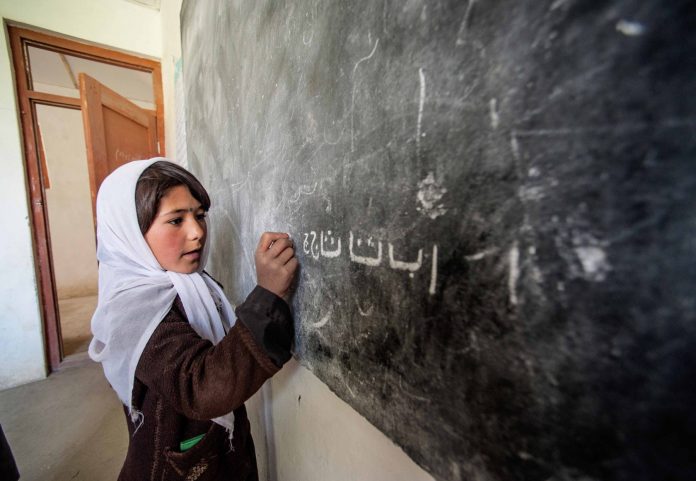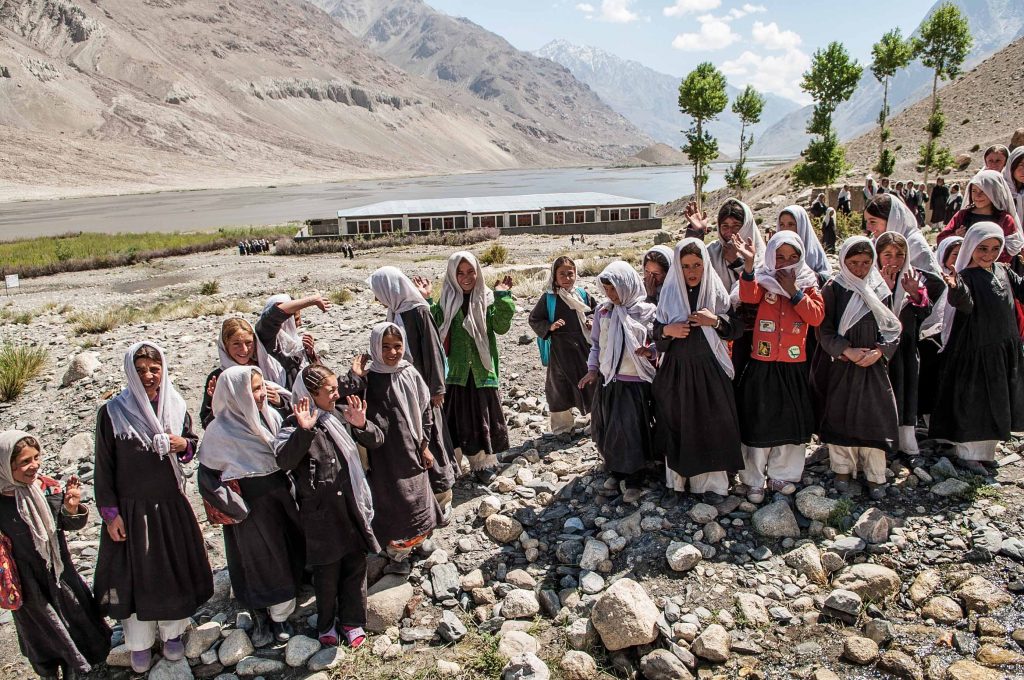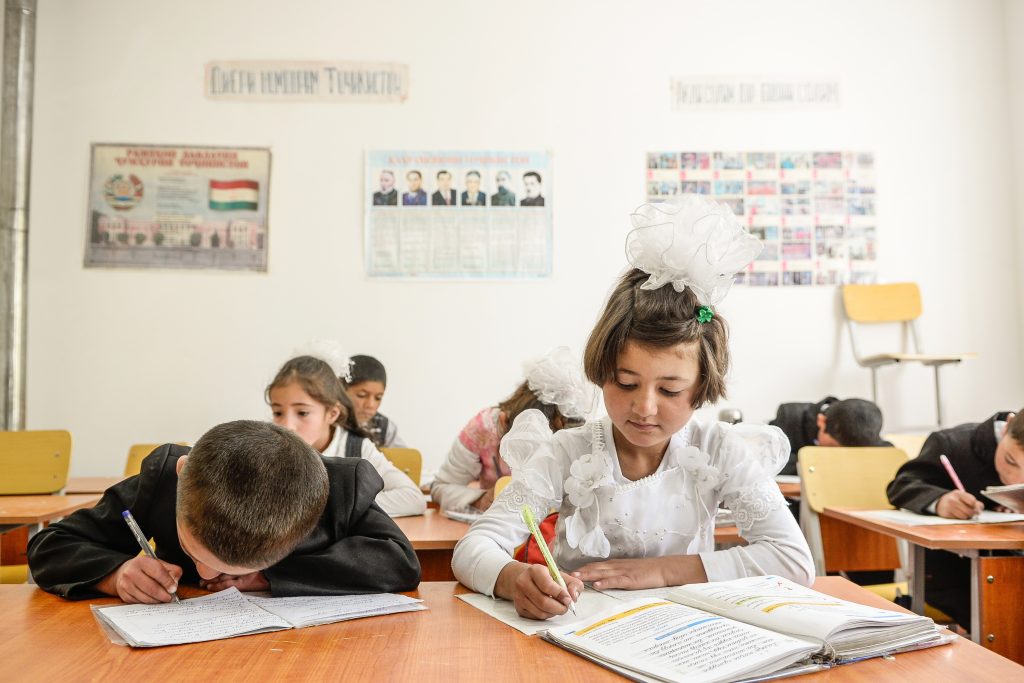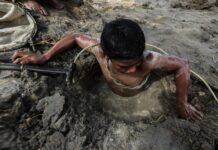
Inheriting a future
Text Karin Ronnow
Photos Erik Petersen
Within seconds, a herd of huge, burly yaks stampeded past the school, thundering toward the river. The yaks’ hoof beats shook the ground and momentarily drowned out the voices in the classroom. As the yaks thinned out, the students turned their attention back to the teacher and did not notice the young boy in threadbare clothes and Chinese rubber boots rounding up the stray yaks.
The boy should be in school. But like millions of children in Pakistan and Afghanistan, he has to work instead. When children reach school age in these impoverished societies, parents must weigh their two options: work or school.
“Everyone has a fierce desire for education, but where there is such abject poverty and survival depends on manual labour, many children are deprived of school,” says Greg Mortenson, co-founder of Central Asia Institute (CAI), a non-profit organisation that built DeGhulaman’s first school.
In DeGhulaman, most adults are illiterate and there are no paying jobs. Families herd sheep, goats and yaks, and grow small plots of grain and vegetables in the arid, high-altitude landscape. The village children rise before sun-up, fetch water and collect dry yak dung and brush to fuel the fire.
They milk the goats, sheep and camels, and later take the animals high into the mountains to graze. Everything is done by hand: ploughing, building, sewing. There are no shortcuts. In the face of such adversity, parents too often have no choice but to keep their children home from school to help support the family.
The UN Declaration of Human Rights unequivocally states that every child has a right to education. In Afghanistan and Pakistan, governments, community leaders and humanitarian groups like CAI are working with communities to make that right a reality. But the work is slow, labour-intensive and expensive.

“Grow our brain”
For centuries, education wasn’t even a dream in many places where CAI works. One generation of illiterate people succeeded another.
CAI began its work in the Karakoram mountains of northern Pakistan in the mid-1990s. According to Taha, village chief of Korphe, at the far end of Braldu Valley, in those days, thousands of climbers and trekkers came through the region, en route to K2 and the other famous nearby peaks.
The area was renowned for its Marco Polo sheep, ibex and snow leopards. “But we had no school, books or pencils,” he says.
Communities had already begun to sense that something had to change. Populations were growing, putting pressure on limited resources, says Saidullah Baig, CAI’s programme manager in the Hunza region of Gilgit-Baltistan, in northern Pakistan.
He cites the trend in remote areas for inherited land to be divided among so many family members and generations as to make parcels nearly worthless.
“Eventually, they have no land there; it’s finished. That’s why we need men and women to work together for education and a better future.”
Wakhi poet and teacher Nazir Bulbul concurs. “The community believes the first priority is education. Because our land pieces are shrinking and there are no more job opportunities in those mountain areas, the only thing we could grow is our brain, so we want to do that.”
CAI’s work started in Pakistan’s northern areas and then expanded into Afghanistan and Tajikistan. Over the past two decades, CAI has helped establish or support nearly 300 schools, mostly in places that define the word “remote”. To get there requires traversing vertigo-inducing roads along mountain ridges and cliffs, through glacial streams, and over treacherous talus slopes.
The destination is invariably well off the beaten path, where medical care is basic or non-existent, clean drinking water is rare, and sewer drainawge is primitive.
Although literacy rates are slowly increasing as students complete school, the adult literacy rates in many of these areas are still just climbing out of the single digits, especially among women.
“This work takes time,” admits Mortenson. “It takes patience and persistence, continuity and commitment.”
A matter of life and death
To put it in perspective, consider that not one of the ninth-grade students at CAI-supported Sheshp High School in the Afghan Wakhan has ever used the Internet, watched television, or used a cell phone.
They’ve never even ridden in a car; they’ve only seen them pass by on the only road – a rugged track more often walked than driven. As the 2010 Afghanistan Education Sector Analysis by London-based Adam Smith International puts it: “Until the last decade, many people in Afghanistan lived in such isolation that they were largely untouched by the modern world.”
Conflict and violence also weigh heavily on the region. Thirty-six years of war in Afghanistan and increasing extremism and sectarian violence in Pakistan have taken a toll.
The prevalence of weapons; the illegal drug trade and opium addiction; displaced families; killings; executions; disappearances; rocket attacks and gunfire; revenge and ethnic divisions – people are very weary. They simply want peace.
“Education is a matter of life and death for us,” says Mohammad Hanifa, a ninth-grader at a CAI-supported school in northern Pakistan’s Hushe Valley.
“We all know the importance of education. Without education, any nation cannot progress. The world is progressing rapidly [and] without requisite advance in education not only shall we be left behind others, but we may be wiped out altogether.”

Girls’ education
Asia’s economic powerhouses are built on quality education. Yet, while most Asian countries are now on an educational par with the rest of the world, Pakistan and Afghanistan still lag far behind in access to education – especially for girls.
CAI has always emphasised the importance of girls’ education: if a village wants a school, it has to include girls. But this is not always an easy sell. These remote areas are patriarchal and traditional.
The hierarchical and authoritarian societies are built on family, kinship and clan, which means relationships with the right people are key to changing minds. New ideas need time to take root.
No one could make the argument for girls’ schools quite like the late Sarfraz Khan, who spearheaded CAI’s most remote projects.
“We tell them, ‘If the mother is educated, she can teach all the children,’” he said in 2012. “Father is not teaching children; he is out of the house, going to work in the fields. But mother is inside the house.
Education starts in the home, from the mother. If the mother has a good education, then she can teach her children. After that, your daughter’s children become good people and then we have peace. That is why we need girls’ education.’”
Global research proves that girls’ education is one of the most powerful investments that a society can make, which results in better health, financial stability and civic engagement – for the girl, her family and the entire community.
Yet, obstacles remain. For example, Afghanistan has been “in a protracted state of conflict and instability” for three decades, as a UNICEF report puts it. Everyone suffers, but women in particular get the short end of the stick.
A 2011 Thomson Reuters Foundation poll ranked Afghanistan the most dangerous country in the world for women. Even if it wants to build education, Afghanistan simply does not have the funds or resources, and international pledges made during the 2001 Bonn Conference, 2012 Tokyo Conference and 2014 London Conference fell far short of what the country needs to build a bright future through education.
The situation in Pakistan is equally dire, although it gets less attention. Millions of girls never have an opportunity to go to school. Yet the government lowered education funding in this year’s budget to only 2.1 percent of GDP, the lowest in the country’s 68-year history.
Girls’ education is less of a hard sell in Tajikistan, thanks in large part to 70 years of Soviet rule. But since the Soviet Union’s collapse, the quality of Tajik education has declined significantly, resulting in the first-ever generation of students with an education inferior to that of their parents.
But hope endures. The people of this region are fiercely determined to build a better future. The awarding of the 2014 Nobel Peace Prize to Malala Yousafzai, Pakistan’s young activist for female education, has increased awareness of the plight of girls across the region and the need to “wage a glorious struggle against illiteracy”. Time will tell whether the international community will heed Malala’s call to action.
For more stunning stories and photographs from this issue, check out Asian Geographic Issue 111.










